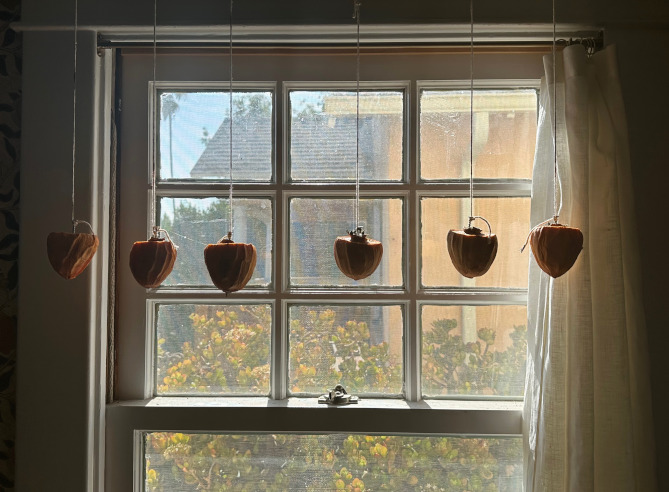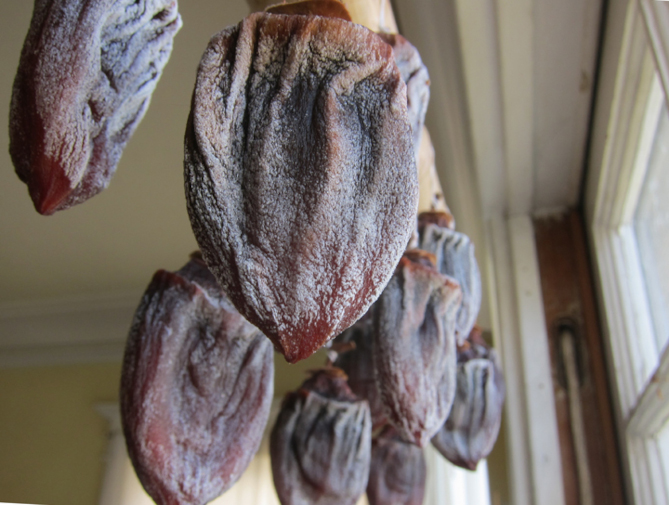
Pumpkin spice/”Christian Girl Autumn” arrives here in Los Angeles without the warning of red and yellow leaves that comes elsewhere. In our house we believe in making hoshigaki in the fall with persimmons from either the market or, better yet, a neighbor or friend rather than chugging those pumpkin spice lattes. We’ve got a row of seven store bought persimmons hanging in a south facing window and plans to start more.

Here’s what they look like when completed.
If you’ve never tried making hoshigaki, a kind of transcendent dried fruit product that’s very expensive to buy, I can report that it’s one of the more worthwhile DIY projects on this blog and we’ve got directions here. EaterLA has a post on different methods and the history of the practice.

Our original post on the subject resulted in one of the more surreal episodes over the years running this blog: being invited to be on a Japanese reality show that matched non-Japanese participants with experts in Japanese crafts and arts. I exchanged emails with the producer towards flying over until a friend of ours, who lives in Japan, warned us about the sort of humiliation this particular show trades in. If you want to respond with some form of “you only live once” I’d invite you to google “extreme Japanese reality show” and see the type of thing I was worried about.
That said, get yourself some persimmons and give this a try. Maybe you’ll get a free trip to Japan.





